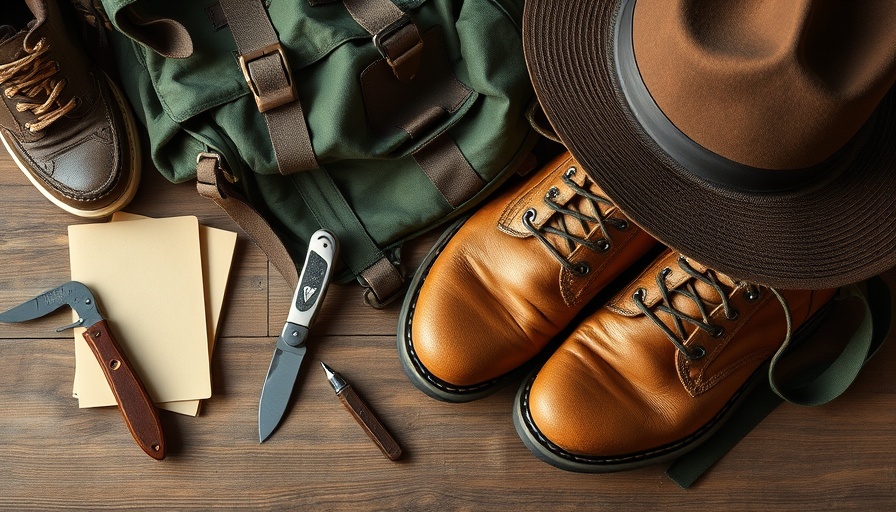
The Importance of Knife Safety for Travelers and Families
Traveling can be an exhilarating adventure, filled with opportunities for exploration, learning, and creating lasting memories, especially for families. However, ensuring safety in every aspect of your journey is essential—particularly when it comes to using tools like knives. While knives can serve many purposes—from preparing meals during camping trips to addressing emergency situations—the responsibility of carrying and using them should never be taken lightly. Here, we delve into crucial knife safety tips that not only protect you and your loved ones but also instill necessary awareness for responsible traveling.
Understand Local Laws to Avoid Trouble
The first step in ensuring knife safety is understanding the laws and regulations regarding knives at your destination. Knife legality can vary greatly—not just between countries but also within states and cities. For parents traveling with children, it's essential to check these laws before embarking on a trip. For instance, while some areas may restrict fixed-blade knives, others might limit the size of folding knives. Failing to adhere to these rules could result in serious legal repercussions, so a little research goes a long way.
Choosing the Right Knife: Practicality Over Size
When selecting a knife for travel, think of functionality, not flashiness. Opt for compact and multipurpose tools like pocket knives or multitools. These options ensure you’re equipped for various tasks—from slicing fruit to repairing gear—without attracting negative attention. Furthermore, it's vital to keep in mind that even small knives can be confiscated during airport security checks; hence, packing them in your checked luggage is advisable. This consideration is especially important for parents traveling with kids, as a simple oversight could lead to undesirable stress.
Securely Packing Your Knife: Safety Comes First
A loose knife is an accident waiting to happen. To prevent injuries, especially to children excitedly rummaging for snacks, always secure your knife. Utilize a blade cover or sheath, and ideally, store it in a designated pouch in your gear. Consider using a tool roll or organizer bag to keep all your travel necessities secured and easily accessible. Taking these safety measures can save trips to the hospital and ensure that your family enjoys every moment of your travels.
Safe Handling Practices: Cut, Don’t Rush!
Knife handling requires mindfulness. Whether you're slicing cheese for a picnic or cord for a camping activity, it’s crucial to cut away from your body and avoid distractions. Especially when traveling with children, demonstrating proper knife usage can teach them valuable lessons about safety and responsibility. Encourage a habit of drying hands before handling a knife to prevent slips, and remind them to maintain focus to avoid unwanted injuries.
Maintenance: A Sharp Knife Is a Safe Knife
Believe it or not, dull blades pose more danger than sharp ones. A dull knife requires more force and could lead to loss of control. Regularly maintaining your knife includes keeping it sharp and clean to ensure it remains as safe as possible during your adventures. For families, this can be an excellent opportunity to involve kids in learning about the importance of tool care—a skill that serves them well beyond travel.
The Right Time to Use Your Knife: Less Is More
Parents, teaching children to use knives only when necessary promotes not just safety but also critical thinking. Whether you’re on a family hike or at a picnic, using your knife solely for specific purposes, like preparing food or general repairs, helps instill a sense of responsibility. Encouraging your children to think before they act will lead to safer environments, whether at home or abroad.
Training and Understanding: The Foundation of Safety
Consider investing in a basic knife safety course for older children as part of your family activities. Understanding the correct usage of a knife fosters a sense of safety and preparedness, which can carry over into other facets of life, whether at school or during sports activities. Knowing the right techniques also ensures that when accidents do occur, they can be dealt with swiftly and effectively.
Final Thoughts: Ensuring Adventures Are Safe and Memorable
Traveling with children can be rewarding, but ensuring their safety while utilizing tools like knives is paramount. Following these practical knife safety tips can minimize risks and help families focus on creating joyous memories rather than worrying about accidents. As you plan your next adventure, remember these guidelines to stay safe, alert, and ready for whatever may come your way.
So, are you ready to hit the road with greater confidence? Remember to pack wisely, select the appropriate gear, and educate your loved ones on safety best practices. Adventures await—but safety should always come first!
 Add Row
Add Row  Add
Add 




Write A Comment